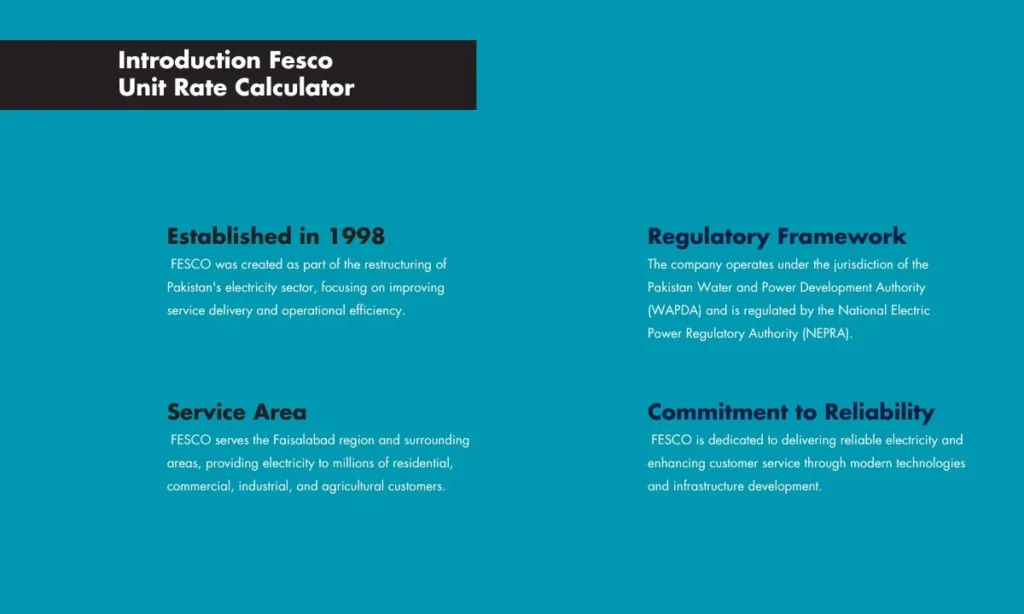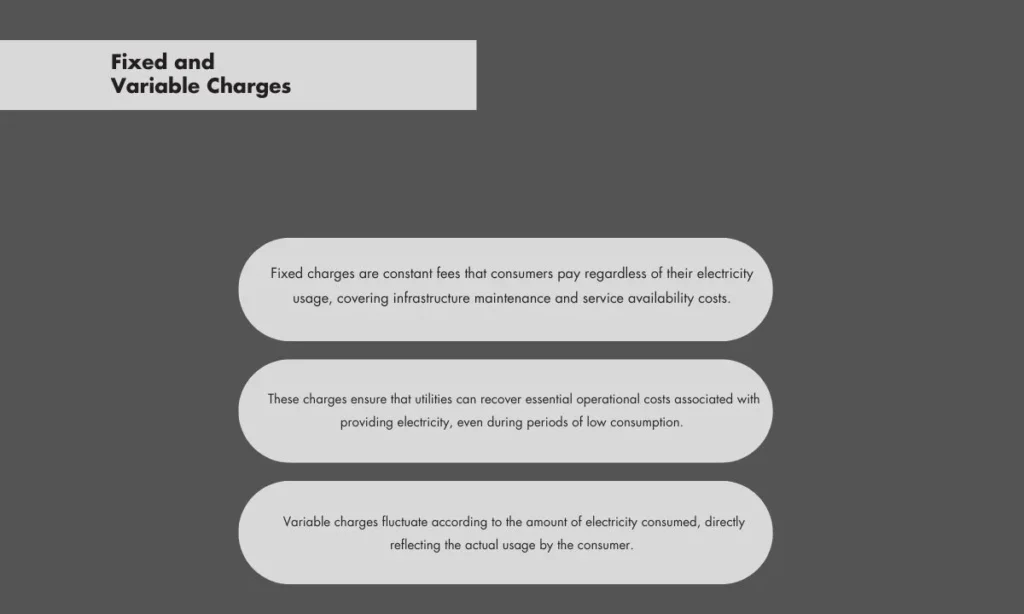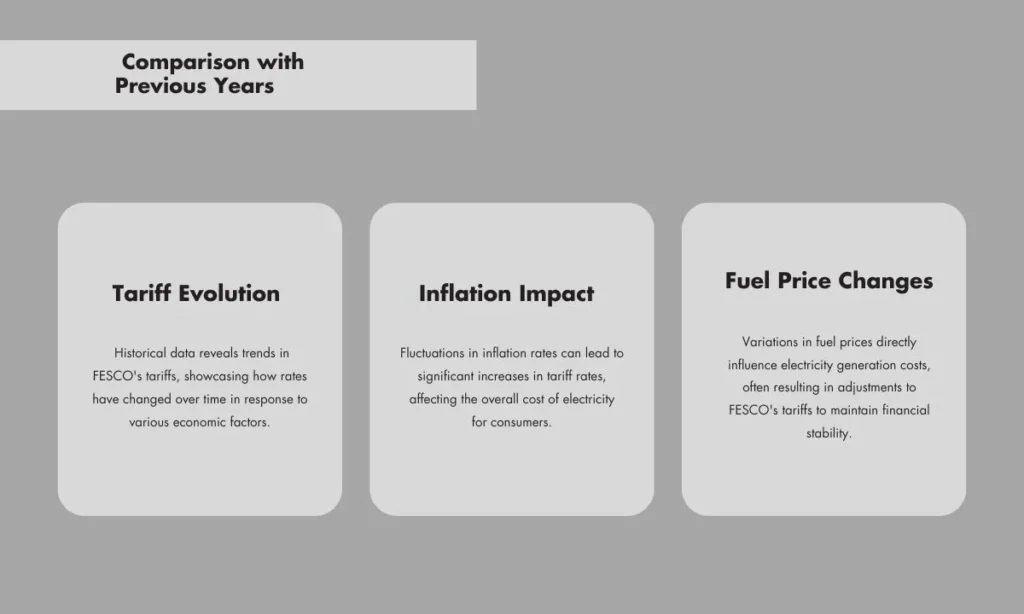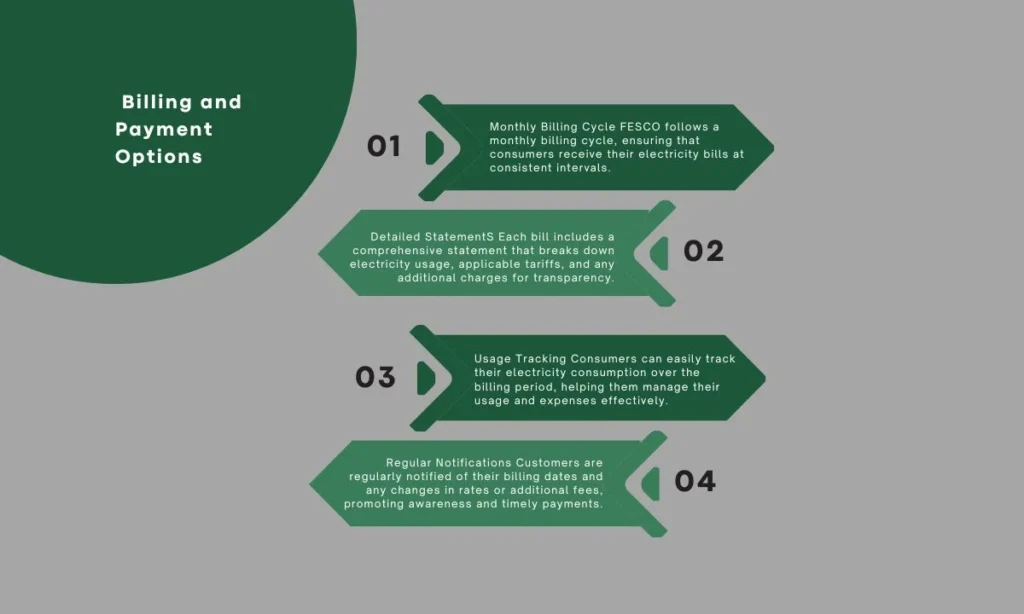The Faisalabad Electric Supply Company (FESCO) is a prominent electric distribution entity in Pakistan, established in 1998 as part of the country’s electricity sector restructuring. Operating under the Pakistan Water and Power Development Authority (WAPDA) and regulated by the National Electric Power Regulatory Authority (NEPRA), FESCO serves millions of customers across urban and rural areas in the Faisalabad region.
FESCO is committed to delivering reliable electricity while enhancing customer service through modern technologies. Its extensive infrastructure includes substations, transmission lines, and distribution networks essential for effective power distribution. Additionally, FESCO actively participates in initiatives aimed at energy conservation and the promotion of renewable energy, aligning with national sustainable development goals.
Introduction Fesco Unit Rate Calculator

Overview of FESCO
The Faisalabad Electric Supply Company (FESCO) is one of the leading electric distribution companies in Pakistan, serving the Faisalabad region and surrounding areas. Established in 1998 as part of the restructuring of the electricity sector, FESCO operates under the jurisdiction of the Pakistan Water and Power Development Authority (WAPDA) and is regulated by the National Electric Power Regulatory Authority (NEPRA).
FESCO’s service area encompasses a wide range of urban and rural communities, providing electricity to millions of customers, including residential, commercial, industrial, and agricultural users. The company is committed to ensuring the efficient and reliable delivery of electrical power, while also focusing on improving customer service and adopting modern technologies.
FESCO’s infrastructure includes substations, transmission lines, and distribution networks that are essential for the effective distribution of electricity. The company is also involved in various initiatives aimed at enhancing energy conservation and promoting renewable energy sources, aligning with national policies for sustainable development.
Importance of Tariff Rates
Tariff rates are a fundamental aspect of the electricity supply industry, determining how much consumers pay for the electricity they use. Understanding the structure and implications of these rates is essential for both consumers and the utility provider.
- Economic Impact: Tariff rates directly affect household budgets and business operating costs. For residential consumers, fluctuating rates can influence monthly expenses significantly. For businesses, especially small and medium-sized enterprises (SMEs), electricity costs are a critical component of operational expenses. High tariffs may lead to increased prices for goods and services, ultimately impacting the overall economy.
- Investment and Infrastructure Development: Tariff rates also play a crucial role in attracting investment into the energy sector. A transparent and fair tariff structure can encourage private sector investment in electricity generation and distribution, which is vital for expanding and modernizing the electrical infrastructure. This, in turn, can lead to improved service delivery and reliability.
- Consumer Awareness and Protection: Understanding tariff rates empowers consumers to make informed decisions about their electricity usage. Awareness of how tariffs are structured can lead to more efficient energy consumption, helping consumers manage their electricity bills effectively. Furthermore, regulatory bodies like NEPRA establish guidelines to protect consumers from unfair pricing practices, ensuring that rates remain just and equitable.
Regulatory Authority

NEPRA (National Electric Power Regulatory Authority)
The National Electric Power Regulatory Authority (NEPRA) is the apex regulatory body established under the NEPRA Act of 1997. Its primary objective is to foster a competitive and efficient electric power industry in Pakistan. NEPRA is responsible for formulating policies and regulatory frameworks that ensure fair pricing, transparency, and accountability in the electricity sector.
- Functions and Responsibilities:
- Licensing: NEPRA issues licenses to electricity generation, transmission, and distribution companies, ensuring that only qualified entities operate in the sector.
- Tariff Determination: The authority evaluates and approves tariff proposals submitted by distribution companies like FESCO. This includes assessing the cost of service and ensuring that tariffs reflect the true cost of electricity supply.
- Consumer Protection: NEPRA monitors the performance of electricity companies and addresses consumer grievances, ensuring that customer rights are protected.
- Impact on the Electricity Sector:
- NEPRA’s regulations have significantly shaped the electricity landscape in Pakistan, promoting competition, encouraging investment, and facilitating the introduction of renewable energy sources.
Role in Tariff Setting
NEPRA plays a crucial role in setting tariffs for electricity distribution companies, ensuring that rates are both fair and reflective of the costs involved in supplying electricity. The tariff-setting process involves several key steps:
- Cost of Service Evaluation: NEPRA requires distribution companies to submit comprehensive financial and operational data to assess the true cost of providing electricity, including generation, transmission, and distribution costs.
- Public Consultations: The authority conducts public hearings to gather feedback from stakeholders, including consumers, business representatives, and civil society organizations. This process ensures transparency and allows for public input on proposed tariff changes.
- Determination of Tariff Categories: NEPRA classifies consumers into different categories (e.g., residential, commercial, industrial) and sets specific rates for each category based on consumption patterns, peak load demands, and economic factors.
- Approval of Tariff Adjustments: Once the evaluation is complete, NEPRA approves tariff adjustments, which are then communicated to the public. This ensures that consumers are aware of any changes in rates.
FESCO Tariff Structure
Overview of Tariff Categories
FESCO’s tariff structure is designed to accommodate various consumer categories, ensuring that each group is charged appropriately based on its consumption needs. The main categories include:
- Residential Consumers: This category includes households and is typically subject to tiered pricing based on monthly usage levels.
- Commercial Consumers: Businesses that use electricity for commercial activities, usually subject to different rates than residential users, reflecting higher consumption patterns.
- Industrial Consumers: Factories and industrial units that require significant electricity supply, often benefiting from lower rates for high-volume usage.
- Agricultural Consumers: Farmers who rely on electricity for irrigation and other agricultural activities, typically benefiting from subsidized rates.
Fixed and Variable Charges

FESCO’s tariffs consist of both fixed and variable charges, which can be summarized as follows:
- Fixed Charges: These are constant charges that consumers pay regardless of their electricity consumption. They cover costs related to infrastructure maintenance and service availability. Fixed charges ensure that the utility can recover costs associated with providing electricity, even when usage is low.
- Variable Charges: These charges fluctuate based on the amount of electricity consumed. Variable charges reflect the actual usage and are calculated based on the per-unit price of electricity. Consumers who use more electricity will see higher variable charges, incentivizing energy conservation.
Current Tariff Rates (2024)
Domestic Tariff Rates
- Residential Consumers:
- FESCO’s domestic tariff rates for residential consumers in 2024 have been structured into multiple slabs, with each slab representing a different range of monthly consumption.
- Example Tariffs:
- 0-100 units: [Insert Rate] per unit
- 101-300 units: [Insert Rate] per unit
- 301-500 units: [Insert Rate] per unit
- Above 500 units: [Insert Rate] per unit
- Rural vs. Urban Rates:
- Tariffs may vary between rural and urban consumers to account for differences in infrastructure and service delivery costs. Rural consumers might benefit from subsidies designed to promote equitable access to electricity.
Commercial Tariff Rates
- Commercial consumers, including small businesses and large enterprises, typically face higher rates than residential consumers due to greater demand and higher reliability requirements. Tariffs are structured to encourage efficient usage and can include additional charges based on peak demand.
Industrial Tariff Rates
- Industrial tariffs are designed for manufacturers and large-scale operations, often offering discounted rates for high-volume usage to promote economic growth in the industrial sector. These tariffs may include incentives for adopting energy-efficient technologies.
Agricultural Tariff Rates
- Agricultural consumers usually enjoy subsidized rates to support the farming sector. This can include specific rates for irrigation pumps and agricultural equipment, promoting sustainable practices and food security.
Comparison with Previous Years

Historical Tariff Trends
- Yearly Comparison of Rates:
- Analyzing historical data shows how FESCO’s tariffs have evolved over the past years, highlighting any significant increases or decreases due to various factors such as inflation, changes in fuel prices, and government policy adjustments.
- Factors Influencing Rate Changes:
- Changes in regulatory policies, fuel costs, and operational efficiency directly affect the rates set by NEPRA and subsequently by FESCO.
Percentage Increase/Decrease
- Consumers can expect periodic notifications regarding any adjustments in tariffs, typically expressed as a percentage increase or decrease. Understanding these fluctuations helps consumers plan their budgets and adapt their consumption habits.
Subsidies and Surcharges
Overview of Government Subsidies
- Types of Subsidies Available:
- The government may provide direct subsidies to lower tariffs for certain consumer categories, such as low-income households and agricultural users. These subsidies are aimed at making electricity more affordable and accessible.
- Eligibility Criteria for Subsidies:
- To qualify for subsidies, consumers may need to meet specific criteria, such as income limits or consumption thresholds.
Surcharge Implications on Tariffs
- Explanation of Surcharges:
- Surcharges are additional fees applied to consumers’ bills, often used to recover costs associated with fuel price adjustments or other unforeseen expenses.
- How Surcharges Affect Total Bills:
- Understanding how surcharges are calculated and applied can help consumers manage their electricity expenses better.
Billing and Payment Options

Monthly Billing Cycle
- FESCO operates on a monthly billing cycle, with bills issued at regular intervals. Consumers receive detailed statements that outline their usage, applicable tariffs, and any additional charges.
Payment Methods Available
- Online Payment Options:
- FESCO offers a range of online payment options, including bank transfers, mobile wallets, and dedicated payment platforms.
- Mobile Payment Applications:
- Consumers can utilize mobile apps to pay their bills conveniently, making the process more accessible.
- Bank and Utility Payment Centers:
- Payments can also be made at designated banks and utility payment centers, providing multiple avenues for consumers to settle their accounts.
- Payment Plans for Consumers:
- FESCO may offer flexible payment plans to assist consumers in managing their electricity bills, especially in cases of high usage or financial hardship.
Conclusion
Summary of Key Points
This document explored Faisalabad Electric Supply Company (FESCO) and its tariff structure, highlighting:
- Regulation: FESCO is governed by NEPRA, ensuring fair pricing and accountability.
- Tariff Structure: Tariffs are categorized for residential, commercial, industrial, and agricultural users, reflecting different consumption needs.
- Current Rates for 2024: A tiered pricing system is in place, adjusting costs based on usage levels.
- Historical Trends: Past tariff changes illustrate the impact of economic factors and government policies.
- Subsidies and Surcharges: Understanding these helps consumers manage their bills better.
- Billing Options: Various payment methods enhance consumer convenience.
- Customer Support: FESCO is committed to providing accessible information and assistance.
Future Outlook for FESCO Tariffs
Looking ahead, several trends may shape FESCO tariffs:
- Rate Adjustments: Economic changes and regulatory updates could lead to tariff revisions.
- Renewable Energy: Increased integration may result in new incentives and pricing structures.
- Technology: Smart metering could improve billing accuracy and consumer engagement.
- Consumer Focus: Enhanced awareness might drive more tailored tariff offerings.
- Policy Changes: Future government policies will significantly influence pricing strategies.
